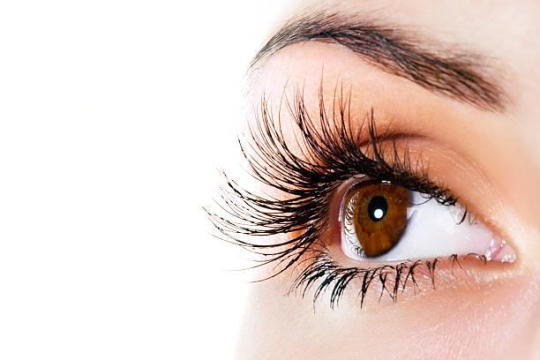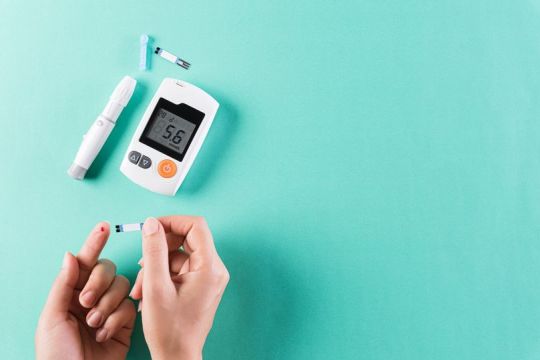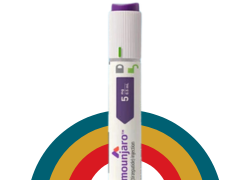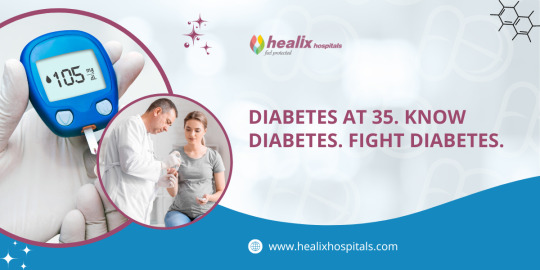#signs of type 2 diabetes in adults
Text
Delving Deep into the Multifaceted Indicators of Type 2 Diabetes: An Exhaustive and Comprehensive Examination
In this incredibly extensive and all-encompassing guide, we embark on a profoundly profound exploration of the telltale signs of Type 2 diabetes, shedding an exceptionally brilliant and illuminating light on its early warning manifestations while providing invaluable insights to empower you with an unprecedented depth of knowledge about your health. Within these meticulously crafted pages, you…

View On WordPress
#Adults and children#Age#Blood sugar#Blood Sugar Monitoring#blurred vision#Chronic Metabolic Disorder#Diagnosing Type 2 diabetes#Early warning signs#excessive thirst#Exercise role#Family history#FAQs#fasting plasma glucose test#Fatigue and weakness#Frequent infections#frequent urination#gestational diabetes#Gestational diabetes link#Glucose processing#health complications#Healthy eating#Hemoglobin A1C Test#High blood pressure#Increased hunger#Insufficient insulin production#Insulin Resistance#Lifestyle Changes#lifestyle modifications#Managing Type 2 diabetes#Medication and insulin therapy
0 notes
Text
Astrocartography notes

🌍 Do you want to study abroad? Work abroad? Your MC lines show what domain to pursue:
Sun MC: photographer, actor; check the planet ruling your Sun's zodiac sign for more details
Moon MC: nurse, preschool/elementary teacher, childcare worker/nanny, doula, housekeeper
Mercury MC: librarian, language teacher, speech language pathologist, translator, working in academia, journalist, PR agent, receptionist, secretary, architect, economist, comedian
Venus MC: modelling, artist, fashion designer, hairstylist, makeup artist, art director, interior designer, garden designer, florist, wedding planner
Mars MC: surgeon, firefighter, working at the police, sportsman (the type of sport depends on the zodiac sign Mars is in your birth chart, for ex. Mars in Pisces = football, swimming; Mars in Libra = gymnastics); fitness instructor
Jupiter MC: international driver (driving to your Jupiter MC line brings bonusess💰💰), flight attendant, hotel manager, tour guide, philosopher
Saturn MC: general practitioner, dentist, law, working in the Parliament, working in public institutions, business (CEO), historian, construction worker
Uranus MC: STEM (engineering, ecology sciences, biology), electrician, weather presenter, astronomer/astrophysicist, astrologer, sociology, social worker, advocate for human rights/activist
Neptune MC: choreographer, scenographer, film/theater director, actor, ballet dancer, music composer, rehabilitation worker, bartender, yoga instructor, meditation teacher, reiki practitioner
Pluto MC: adult actor, therapist, psychiatrist, any job regarding forensics (detective, toxicologist, forensic accountant etc.), embalmer, funeral director, loan officer, research analyst
🌍 If you have no astrocartography lines passing through the country you lived for most of your life, you probably don't feel at home in that country and have always wanted to relocate to another country
🌍 When you have atleast 2 lines "conjuncting" each other through a certain country, the planet that is more dominant in your birth chart will have a higher effect in astrocartography
🌍 Mercury IC line can show where one of your siblings or cousins relocate at some point during their life
🌍 If you're a girl and you have daddy issues (hey, we don't judge here!!), travelling to Saturn DSC line will likely bring you lots of opportunities of meeting your perfect partner, but also harsh lessons regarding control in a relationship (this is a good line for you to heal your daddy issues)
🌍 If you want to meet your future spouse and you (personally) find international guys attractive, travelling to Jupiter DSC line is a very good idea. Your future spouse might also be a foreigner in that country, just like you :)
🌍 Sun ASC line shows you where you can find your life's purpose. Also your depression:📉📉 0%, while your happiness:📈📈 100% (unless your Sun is in your 8th or 12th house, then the mental health effect is the complete opposite)
🌍 You could give birth on your Moon IC line😳 or your mom could have given birth to you on that line
🌍 Venus ASC line shows you where you could take lots of pictures (of yourself, of the sightseeings). Also, where you could get diabetes where you will want to try every type of sweets you find there
🌍 You will either get very drunk, consume drugs or smoke some weird shit on your Neptune ASC line (pls take care of your health)
🌍 You could randomly meet an ex or someone who resembles your ex while travelling to your Chiron DSC line
#astro#astro community#astrology#astro placements#astro observations#astro posts#astroblr#astro blog#astro notes#astrocartography#zodiac
1K notes
·
View notes
Text
ੈ✩ importance of sleep


Hello angels 💗🎀 I’ve been struggling with my sleep schedule lately so I’m writing this to remind and help anyone who is in the same dilemma as me~
Sleep is critical for a healthy mind and body, so prioritise your sleep before anything else for a balanced lifestyle !!
Below is information from a Harvard blog:
According to the National Sleep Foundation, high school students (ages 14-17) need about eight to 10 hours of sleep each night. For young adults (ages 18 to 25), the range is need between seven and nine hours. However most don’t follow this expectation and therefore experience many negative consequences.
Signs of chronic sleep deprivation include:
🎀Daytime sleepiness and fatigue
🎀Irritability and short temper
🎀Mood changes
🎀Trouble coping with stress
🎀Difficulty focusing, concentrating, and remembering
🎀Brain fog
🎀Weight gain and obesity
🎀Cardiovascular disease
🎀Type 2 diabetes.
Students who prioritize sleep are better able to cope with the stress that comes with being an active student.
“It’s a vicious circle where the more stressed you get, the less you sleep, and the less you sleep, the more stressed you get. And in the long term, that can lead to serious psychiatric problems,” says Dr. Edward Pace-Schott, Harvard Summer School and Harvard Medical School faculty member and sleep expert.
In the worst case scenario, the combination of lack of sleep and stress can lead to mental health disorders such as depression, general anxiety disorder, and potentially even post-traumatic stress disorder.


Tips for getting more sleep as a student
The key to getting a good night’s sleep is establishing healthy sleep habits, also known as sleep hygiene.
The first step is deciding to make sleep a priority.
Staying ahead of coursework and avoiding distractions and procrastination while you study is key to avoiding the need for late night study sessions. And prioritizing sleep may mean leaving a party early or choosing your social engagements carefully.
Yet the reward—feeling awake and alert the next morning—will reinforce that positive choice.
The next step is establishing healthy bedtime and daytime patterns to promote good quality sleep.
Pace-Schott offers the following tips on steps you can take to create healthy sleep hygiene:
🎀Limit caffeine in close proximity to bed time. College students should also avoid alcohol intake, which disrupts quality sleep.
🎀Avoid electronic screens (phone, laptop, tablet, desktop) within an hour of bedtime.
🎀Engage in daily physical exercise, but avoid intense exercise within two hours of bedtime.
🎀Establish a sleep schedule. Be as consistent as possible in your bedtime and rise time, and get exposure to morning sunlight.
🎀Establish a “wind-down” routine prior to bedtime.
🎀Limit use of bed for daily activities other than sleep (e.g., TV, work, eating)


Good luck angels
~winter
ଘ(੭ˊᵕˋ)੭* ੈ✩‧₊˚
#aesthetic#sleep#self love#college#law of assumption#manifestation#law of manifestation#self care#studying#studyspo#study motivation#it girl#pink pilates girl#green juice girl#dream girl#girlblogging#health & fitness#college life#college student#university#healthy lifestyle#self improvement#self concept#self development#self growth#happiness#healthy#sleep schedule
61 notes
·
View notes
Text
I LOVE YOO 220 Thoughts
1. What excites me the most on this episode is, we got a glimpse of how Yui abused Nol in the past! (Not that I enjoy seeing Nol being abused, far from it, but I'm glad we finally see the plot moving) This is the discussion back in ep 150:

And with today's episode, we now see how Yui utilizes her power as the owner of the hospital: interfering with the doctors and nurses' decision, having their license revoked if they try to defy her, rewarding them with money -or anything- if they do as she say... Of course Yui's hand would stay clean if everyone is too scared of her! It really give us a glimpse of how she abused Nol in the past. Ugh. Now I wonder, did he also had the nurse he's close with removed from his sight because of Yui? Did she also gaslighted him into thinking it's his fault? 😒
Hearing Yui's argument is laughable actually. When a patient is unconscious, a doctor has the right to do some tests based on medical judgement in order to reach the correct diagnosis for the right treatment, because a sleeping patient can't tell the doctor what's wrong with them afterall. She has no right to veto as a mother too(?), since Kousuke is already an adult. Now, whether the CEO of the hospital has the right to revoke a medical lisence based on personal opinion -- or not, I can't tell because I don't know the laws. But well, money and power goes a long way, sadly.
2. At least Nol wakes up with the person he care by his side. Kousuke wakes up with no one in sight, and the sound of arguments outside. Quimchee just loves hammering down Kousuke's sign of neglection, huh. As much of an asshole Kousuke is, he's still the victim of abuse just like Nol :(
3.

AW NAH BITCH, STAY AWAY FROM JAYCE. STAY AWAY FROM NOL. JUST GO AWAY, NO ONE WANTED YOU HERE.
4. Now, about the reason why Yui is so adamant not letting Kousuke be tested by a literal professional. Many people has guessed it's because Yui doesn't want anyone to find out Kousuke is not Rand's biological son, but I don't think we're there yet. Hansuke mentioned basic tests; as far as I know, the basic, standard tests don't include blood-type test or DNA test. It usually only covered the potentials of:
Irregularity in blood (haemoglobin, platetet, RBC counts)
Infection (WBC, Lymphocyte counts)
Liver disfunction (AST, ALT)
Kidney disfunction (Creatinin, Urea, Bilirubin)
Diabetes (blood sugar)
Cholesterol-based illness (LDL, HDL, triglycerides)
Irregularity in electrolytes (Na, K, Cl, Ca)
And that's the gist of it. There's not much to get, unless Yui doesn't want anyone to find out Kousuke is actually diabetic? Maybe she inserted diabetes medicines inside his food? Kousuke did say they have personal chefs, maybe they also received Yui's order. I kinda doubt it though, this seem like a stretch.
It's a different story if Hansuke wanted to check the possible substance inside Kousuke's body, though. Hansuke suspected Kousuke is under the influence; it's the easiest answer that could explain Kousuke's abnormal behavior.

This is just some wild theory but I suspect Yui inserted some antipsychotic drugs in his drink or food (remember the family chefs?) to keep Kousuke in check. If Hansuke finds out about it, it will reveal that Yui has been hiding the fact that Kousuke has some mental disorder, and that could jeopardize his position as the new CFO; that's why Yui doesn't want a blood work. Just a guess 💀
Btw, this is Shinae on episode 14 LMAO

Oh Shinae. Now this doesn't seem like a joke anymore ☠️
Oh. WAIT.


💀💀💀
5. [Yui: what has you scrambling around in distress?] [Kou: I can't recall... ] [Yui: Aww that's too bad...]

Look at that sinister smile. She is DELIGHTED Kousuke forgets. Since Yui knew he hit his head on the wall, I think it's safe to assume(?) she knows Kousuke was looking at patient record earlier. She knows which name that triggers him. Does it mean she doesn't want Kou to find out about Nessa (further, what she did to her)? Has Yui always used Kou's "ignorance" (memory issue) about Nessa's fate to let him mock Nol about her disappereance?

Nol you couldn't be more right. I look forward to see Kou finding out he has been mocking Nol's mom's absence when it's his own "dear mother" who "killed" her. The devastation...
6. I still don't get why would Yui throw away Rand's gift. If anything, I think it'd benefit her more if she give it to Kousuke. Something like: praising him, how he's done such a good job being a CFO that his father would give him an early expensive present, gaslight him into thinking it's not enough, but just a little more until he'd truly acknowledge him, etc. I thought he'd be easier to manipulate if he get enough reward (which he clearly didn't get)? It feels like Yui's manipulation is getting old. Idk, I thought a goal would be much sweeter if he get to taste it, so he'd work even harder. But so far, he didn't taste any of it.
But then it hit me. If Kousuke sees the real present, he'd know his father does care about him. He won't need Yui anymore, he'd start to rely on Rand, as in, the person. And Yui doesn't want that. She wants Kousuke to be fully in her control, she wants him to keep relying on Rand's image by her words; that Rand is a cold man who doesn't care about his family unless Kousuke surpassed him. She just... never let Kousuke to be free. (Which is why I realized Nol has the potential to be a much scarier manipulator than Yui, but that's another topic for another day).
7. Yui touching Kousuke's injured hand without apologizing is such a psychopath thing to do: lacking of guilt or empathy.
8. BAHAHA since we're almost at the end of the year, it's nice to see the reference of earlier episode!


Though, could this be a foreshadowing? If Shinae really becomes Kousuke's assistant in the future, would she be included in the future hospital inspection? Would she play a role in uncovering Nol and Kousuke's mistreatment in the hospital? Lol.
9. MEG!! AOEBJDDJ I hope she would return the gift to Kousuke, just like Shinae who return the bible to Nol! Kousuke needs to know Rand is more caring than he seemed and Yui is much more wicked than he thought! This is probably Meg's role as the member of the Black Team: to open Kousuke's eyes that he still has people who care for him as who he is.
And that's it! See you next week 👋
#i love yoo#ily#ily 220#i love yoo webtoon#line webtoon#quimchee#kousuke hirahara#yui hirahara#ily theory#ily analysis
56 notes
·
View notes
Text
Scientists at Johns Hopkins Medicine say that an experimental monoclonal antibody drug called mAb43 appears to prevent and reverse the onset of clinical type 1 diabetes in mice, and in some cases, to lengthen the animals' lifespan.
The drug is unique, according to the researchers, because it targets insulin-making beta cells in the pancreas directly and is designed to shield those cells from attacks by the body's own immune system cells. The drug's specificity for such cells may enable long-term use in humans with few side effects, say the researchers. Monoclonal antibodies are made by cloning, or making identical replicas of, an animal (including human) cell line.
The findings, reported online and in the May issue of Diabetes, raise the possibility of a new drug for type 1 diabetes, an autoimmune condition that affects about 2 million American children and adults and has no cure or means of prevention.
Unlike type 2 diabetes, in which the pancreas makes too little insulin, in type 1 diabetes, the pancreas makes no insulin because the immune system attacks the pancreatic cells that make it.
The lack of insulin interferes with the body's ability to regulate blood sugar levels.
"People with type 1 diabetes face lifelong injections of insulin and many complications, including stroke and eyesight problems if the condition is not managed properly," says Dax Fu, Ph.D., associate professor of physiology at the Johns Hopkins University School of Medicine and leader of the research team.
Fu says mAb43 binds to a small protein on the surface of beta cells, which dwell in clusters called islets. The drug was designed to provide a kind of shield or cloak to hide beta cells from immune system cells that attack them as "invaders." The researchers used a mouse version of the monoclonal antibody, and will need to develop a humanized version for studies in people.
For the current study, the researchers gave 64 non-obese mice bred to develop type 1 diabetes a weekly dose of mAb43 via intravenous injection when they were 10 weeks old. After 35 weeks, all mice were non-diabetic. One of the mice developed diabetes for a period of time, but it recovered at 35 weeks, and that mouse had early signs of diabetes before the antibody was administered.
In five of the same type of diabetes-prone mice, the researchers held off giving weekly mAb43 doses until they were 14 weeks old, and then continued dosages and monitoring for up to 75 weeks. One of the five in the group developed diabetes, but no adverse events were found, say the researchers.
In the experiments in which mAb43 was given early on, the mice lived for the duration of the monitoring period of 75 weeks, compared with the control group of mice that did not receive the drug and lived about 18–40 weeks.
Next, the researchers, including postdoctoral fellows Devi Kasinathan and Zheng Guo, looked more closely at the mice that received mAb43 and used a biological marker called Ki67 to see if beta cells were multiplying in the pancreas. They said, after treatment with the antibody, immune cells retreated from beta cells, reducing the amount of inflammation in the area. In addition, beta cells slowly began reproducing.
"mAb43 in combination with insulin therapy may have the potential to gradually reduce insulin use while beta cells regenerate, ultimately eliminating the need to use insulin supplementation for glycemic control," says Kasinathan.
The research team found that mAb43 specifically bound to beta cells, which make up about 1% or 2% of pancreas cells.
Another monoclonal antibody drug, teplizumab, was approved by the U.S. Food and Drug Administration in 2022. Teplizumab binds to T cells, making them less harmful to insulin-producing beta cells. The drug has been shown to delay the onset of clinical (stage 3) type 1 diabetes by about two years, giving young children who get the disease time to mature and learn to manage lifelong insulin injections and dietary restrictions.
"It's possible that mAb43 could be used for longer than teplizumab and delay diabetes onset for a much longer time, potentially for as long as it's administered," says Fu.
"In an ongoing effort, we aim to develop a humanized version of the antibody and conduct clinical trials to test its ability to prevent type 1 diabetes, and to learn whether it has any off-target side effects," says Guo.
Other scientists who contributed to the research include Dylan Sarver, G. William Wong and Maria Golson from Johns Hopkins; Shumei Yun from the University of Maryland, Aaron Michels and Liping Yu from the University of Colorado; and Chandan Sona and Matthew Poy from Johns Hopkins All Children's Hospital.
2 notes
·
View notes
Text
Healing Childhood Trauma
Many people face unfortunate, scarring events in their childhood. Most often, the consequences of these can lead to prolonged childhood trauma, which people are left to deal with during their adulthood. If left unaddressed, childhood trauma can have long-term ill effects on the quality of someone's life.
What is Childhood Trauma?
Childhood trauma can be explained as an emotionally painful or distressing event resulting in physical, mental, and emotional consequences. The traumatic experience can range from losing a parent suddenly to physical abuse or a natural disaster. It can even be something as seemingly innocuous as overhearing a conversation with triggering content.
Learning to understand and cope with difficulties, trauma, and tragedies is a natural part of growing up. But in more serious cases, a lack of exposure to proper mental healthcare can result in childhood trauma in adults.
Effects of Childhood Trauma on the Psyche
Childhood trauma can affect neurological development, hormonal regulation, and cognitive and emotional competencies. It also increases impulsive and risky behaviour, such as substance abuse. This claim is substantiated by a 2021 study by Auckland Univerisity on the themes of child abuse and neglect.
What can Cause Childhood Trauma?
Neglect
Familial issues such as divorce
Death of someone close to them
Psychological, physical, emotional, and sexual abuse
Natural disasters
Substance abuse
Community or school violence
Life-threatening illness

Trauma Signs in Children
In preschool and elementary age, childhood trauma symptoms include separation anxiety, difficulty sleeping, frequent nightmares, feelings of anxiety, crying for no reason, decreased appetite, moodiness, and increased aggression.
In teens, the signs of childhood trauma are irritability, academic problems, sudden withdrawal from social activities, self-blame, difficulty concentrating, feelings of depression, and increased behaviors like sexual activity and alcohol and substance abuse.
What Happens if Trauma Remains Unresolved?
Effects of childhood trauma and early childhood trauma are distorted self-perception, feelings of shame and guilt, chronic physical pain, and anxiety.
Repressed childhood trauma can also cause depression, panic attacks, fatigue, impulsiveness, insomnia, self-harm, eating disorders, and suicidal ideation. Childhood trauma in adults also increases the risk of mental health disorders. Depressive, anxiety, obsessive-compulsive bipolar, and substance use are some disorders caused by childhood trauma.
Adults with childhood trauma are more common than you imagine. ‘Childhood trauma therapist near me' is among the more common internet searches. In 2020, the World Health Organization estimated that globally, around 1 billion children aged between 2–17 years have experienced physical, sexual, or emotional violence or neglect.
Therapy for childhood trauma is needed to prevent problems in adulthood.
Effect of Childhood Trauma on Health
There are several childhood trauma signs in adults. Toxic stressors in childhood can take a lifelong toll and can manifest in adulthood. So, when adults show signs of trauma, it can be a result of the trauma they experienced in childhood.
Studies have found that the chances of getting a heart disease increased in adults who had experienced abuse, witnessed interpersonal violence, or lived in a household where there was substance abuse. The odds of asthma and diabetes also rose for adults who experienced childhood trauma, such as mental illness, substance abuse, and divorce.
The study found that those who experienced even one type of childhood trauma, such as a family member in jail, were associated with an increased risk of poor mental health. Since types of childhood trauma often involve a trusted loved one, a caregiver, or even a family member, in adulthood, this can lead to trust issues and deeply rooted feelings of insecurity.
Here are some of the signs of childhood trauma that adults might exhibit:
Adults who experience childhood trauma are more prone to depression, mood disorders, and suicidal thoughts.
They are also likely to engage in substance abuse.
Adults affected by childhood trauma may exhibit unexplained and irrational anger or irritability.
Adults with childhood trauma could find maintaining old or establishing new, healthy relationships challenging.
How to Heal Childhood Trauma
Several forms of therapy can help heal childhood trauma, some of which are:
Cognitive processing therapy (CPT): CPT aims to help a person change how they think about the event(s) that led to the trauma, thereby relieving the adverse effects.
Prolonged exposure therapy (PE): This involves confronting the source of fear to reduce anxiety and support healing from childhood trauma.
Cognitive behavioural therapy (CBT): Therapists use CBT to help people identify and correct unhealthy behaviour patterns and develop new ways to cope in case of mental illness caused by childhood trauma.
Hypnotherapy: This is a popular alternative childhood trauma therapy for adults, especially those who have struggled with other therapy types. Here, the therapist works to help reduce the emotion attached to the event by working with the subconscious mind.
While there are several coping mechanisms to deal with childhood trauma, the key is to try different methods and find one that works for you. Since healing is a long process, the sooner you identify the method that suits you best, the better.
Summing up
Recovering from childhood trauma is a long and gradual process. Along the healing journey, chances are that you will experience helplessness and isolation. However, the first step in healing from childhood trauma is to acknowledge the trauma. Do not try to push your feelings under the carpet or minimize them. Acknowledge your emotions, and you are ready for the next step to reclaiming control - seeking support.
4 notes
·
View notes
Text
How to hold Your Eyes healthful.

Don’t take your eyes without any consideration. Take those clean steps to hold your peepers healthy.
1️⃣ Devour nicely
⭕ Good eye health starts offevolved with the meals on your plate. Nutrients like omega-three fatty acids, lutein, zinc, and nutrients C and E may help thrust back age-related imaginative and prescient troubles like macular degeneration and cataracts. To get them, fill your plate with:
Inexperienced leafy vegetables like spinach, kale, and collards
Salmon, tuna, and other oily fish
Eggs, nuts, beans, and different nonmeat protein sources
Oranges and other citrus end result or juices
Oysters and red meat
A nicely-balanced diet additionally allows you stay at a healthful weight. That lowers your odds of obesity and related illnesses like type 2 diabetes, that’s the leading cause of blindness in adults.
2️⃣ Quit Smoking
⭕ It makes you much more likely to get cataracts, damage to your optic nerve, and macular degeneration, amongst many different medical troubles. If you’ve tried to kick the dependency earlier the simplest to begin again, preserve it. The more times you try to stop, the much more likely you’re to prevail. Ask your doctor for assistance.
3️⃣ Put on shades
⭕ The right pair of shades will help protect your eyes from the sun’s ultraviolet (UV) rays. An excessive amount of UV exposure boosts the possibility of cataracts and macular degeneration.
⭕ Pick a pair that blocks 99% to 100% of UVA and UVB rays. Wraparound lenses help protect your eyes from the facet. Polarized lenses lessen glare even as you force, but don’t necessarily provide brought protection.
⭕In case you wear touch lenses, some provide UV safety. It’s nonetheless an excellent concept to wear sun shades for an extra layer.
4️⃣Use protection Eyewear
⭕ If you use dangerous or airborne materials on the activity or at home, wear safety glasses or protective goggles.
⭕ Sports activities like ice hockey, racquetball, and lacrosse also can result in eye injury. Wear eye protection. Helmets with protecting face masks or sports activities goggles with polycarbonate lenses will protect your eyes.

5️⃣Appearance far from the computer display
⭕ Watching a pc or telephone screen for too long can reason:
🔰To defend your eyes:
🔶Make certain your glasses or contacts prescription is up to date and precise for looking at a pc screen.
🔶If your eye pressure received’t go away, speak to your medical doctor about laptop glasses.
🔶Move the display screen so your eyes are stage with the top of the reveal. That lets you appearance barely down on the display.
🔶Try and keep away from glare from home windows and lighting. Use an anti-glare screen if needed.
🔶Choose a relaxed, supportive chair. Function it in order that your toes are flat on the floor.
🔶If your eyes are dry, blink more or try using artificial tears.
🔶Rest your eyes every 20 minutes. Look 20 toes away for 20 seconds. Rise up as a minimum every 2 hours and take a 15-minute ruin.
6️⃣ Visit Your Eye doctor often
⭕ Anybody wishes for an ordinary eye exam, even young youngsters. It facilitates guarding your sight and lets you see your exceptional.
⭕ Eye exams also can locate diseases, like glaucoma, that don’t have any signs and symptoms. It is important to identify them early on, whilst they may be less difficult to treat.
🔰Relying on your eye fitness wishes, you may see one all two kinds of medical doctors:
⭕ Ophthalmologists are clinical docs who specialize in eye care. They are able to provide popular eye care, treat eye illnesses, and carry out eye surgical procedures.
⭕ Optometrists have had 4 years of specialized training after college. They offer popular eye care and can diagnose and deal with most eye illnesses. They don’t do eye surgical operations.
🔰A comprehensive eye exam would possibly include:
Speaking about your personal and own family medical records
Vision exams to see in case you’re nearsighted, farsighted, have an astigmatism (a curved cornea that blurs imaginative and prescient), or presbyopia (age-related vision adjustments)
Checks to look at how well your eyes work collectively
Eye strain and optic nerve exams to check for glaucoma
Outside and microscopic exam of your eyes earlier than and after dilation
You might also want different tests.
Protection Eye ware:
👉1. Check it 👉2. Check it
👉3. Check it
👉4. Check it
👉5. Check it
👉6. Check it
If You want to avoid Smoking, Please Start Meditation 👉This one really helps you
UV Protected Shades for Men 👉Check itUV Protected Shades for Women 👉Check itEye ware for Computer User (Men / Women) 👉Check it

#eyeshadow#skincare#beauty tips#healthy life#coronavirus#covid 19#health#nutrition#healthcare#health and wellness#weight loss#blue eyes#big eyes#eyebags#eyeless jack#line#sunglasses#eye lens
4 notes
·
View notes
Text
Walmart Reinforces Commitment To Reasonably Priced Diabetes Care With Personal Label Insulin Choice Throughout Diabetes Awareness Month
"Because of this actuality, way of life modifications must be permanent and not short-term so as to keep away from the potential long-term problems of diabetes," Salas-Whalen says. How to inject insulin correctly Insulin is injected within the fats underneath your pores and skin utilizing a syringe, insulin pen, or pump. It should be injected in the identical space of the body, however not the identical place each day. It's best to inject insulin at mealtime so it's more successfully processed in your body. Foods with a excessive fiber content material are difficult to digest, so the sugar is absorbed more slowly into your blood. Eating foods excessive in fiber, such as fruits, greens, beans, and complete grains might help regulate your blood sugar.
Latent autoimmune diabetes of adults is the diagnostic time period utilized when sort 1 diabetes develops in adults; it has a slower onset than the same condition in children. Given this difference, some use the unofficial term "type 1.5 diabetes" for this situation. Adults with LADA are incessantly initially misdiagnosed as having sort 2 diabetes, based on age rather than a cause. All types of diabetes enhance the risk of long-term problems.
Adults ought to aim for moderate to vigorous physical exercise lasting a minimum of half-hour daily. The extra educated you and your family are about your diabetes, the better your health is likely to be. Diabetes can contribute to numerous acute medical problems. Acute means coming on abruptly rather than developing slowly over time . Damage to the kidneys from diabetes is the main cause of acquired kidney failure. The well being care staff will encounter the affected person at appropriate intervals to watch progress and consider targets.
People with IGT or IFG are at high risk of progressing to kind 2 diabetes, though this isn't inevitable. Sugar Balance Review may be treated and its penalties averted or delayed with diet, bodily exercise, treatment and common screening and treatment for complications. If you’re in danger, have your blood sugar tested and comply with your doctor’s recommendation for managing your blood sugar. Type 1 diabetes was once referred to as “juvenile diabetes” as a result of sort 2 was so rare in children. Now that extra youngsters are obese or overweight, type 2 diabetes is turning into extra common on this age group. If you’re identified with pre-gestational or gestational diabetes, you’ll need special monitoring to prevent problems.
Prediabetes can be a rising problem within the United States, and medical professionals say that recognizing it earlier rather than later is greatest to prevent additional issues down the line. November marks National Diabetes Awareness Month, and local medical specialists are urging people to watch for the signs of this illness. The Centers for Disease Control and Prevention discovered that over 34 million Americans had diabetes back in 2018, which is simply over 10 % of the population. Here's why sugary cereal and milk is in all probability not your greatest breakfast choice, and for extra healthy consuming tips, make sure to examine out Eating Habits to Avoid If You Don't Want Diabetes. Children underneath 6 can be enrolled in the research so long as they're presently going to Sanford Health for annual checkups and never recognized with sort 1 diabetes, based on Sanford's website. To their shock, the research found no indicators of diabetes, however instead, a diagnosis of celiac disease of their 5-year-old daughter, Kemper.
#Diabetes Mellitus#Type 2 Diabetes#Diabetes Tipo 2#What Is Diabetes#Diabetes Symptoms#Diabetes Tipo 1#Diabetes Uk#Type 1 Diabetes#Causes of Diabetes#Diabetes Medications#Diabetes Typ 2#Diabetes Type 2#Diabetes Type 1#Diabetes Drugs#Diabetes Causes#Diabetes Nursing#Tipos De Diabetes#Diabetes Treatment#Symptoms of Diabetes#Type 1 Vs Type 2 Diabetes
2 notes
·
View notes
Text
10 Signs of Diabetes to Watch Out For

According to research, those who have Type 2 diabetes are 50% more likely to pass away before their time, as well as 50% more likely to suffer from heart failure, a heart attack, and other ailments. According to Diabetes UK, 5 million people worldwide have diabetes, of which roughly 1 million are unaware of their condition. The good news is that Type 2 diabetes risks can be reduced via food and lifestyle changes, and if you already have the disease or are pre-diabetic, it can be reversed.
The causes of diabetes, the tell-tale indicators of "insulin resistance," the many forms of diabetes and how they affect us, symptoms to watch out for, and the ideal foods and nutrients to eat are all explained by professional nutritionists.
Diabetes: what is it?
The condition known as diabetes occurs when the body is unable to adequately process blood sugar (glucose), leading to excessive blood sugar levels that raise the risk of developing significant medical disorders.
No matter the type of diabetes, untreated diabetes leads to high blood sugar and insufficient insulin, which prevents the sugar from entering the cells where it will be used for your body's energy production. There are various types of diabetes, each of which has slightly different symptoms and causes.
What triggers diabetes?
Our gastrointestinal tract converts the sugars and carbs in the food we eat into blood glucose, which subsequently circulates in our blood. This glucose is then transported into our body's cells by the insulin, which is secreted by the "beta islet cells" of the pancreas, and utilised by them to produce energy. Insulin is essential for our mood, mental health, and sleep as well as our energy. Our body also permits insulin to reach our brain since it transports serotonin, our "happy hormone" many business listings.
Your body can't transport and use blood glucose to fuel your energy needs and essential biological processes if your pancreas produces insufficient insulin or if your insulin becomes inefficient. Blood in your body's tissues becomes more acidic as a result of the increased blood glucose levels that go unutilized by your body, which raises your risk for heart disease, heart attacks, renal disease, nerve damage, eye disease, and other ailments.
Type 1 Diabetes
The majority of cases of Type 1 diabetes, also known as "juvenile onset diabetes" or "insulin dependent diabetes mellitus," occur in children; however it can also happen to adults.
Type 1 diabetes is brought on by an autoimmune reaction against the pancreas' "beta islet cells," which makes the pancreas' ability to produce insulin useless or at least insufficient. Diabetes type 1 patients require daily insulin injections for the remainder of their lives business listings.
Type 2 Diabetes
Type 2 diabetes, also known as "Adult-onset diabetes" or "Non-insulin dependent diabetes," is a condition in which the body's blood sugar levels have been elevated for a longer length of time then either the beta islet cells in the pancreas weaken and become less successful in producing insulin, or the insulin produced is less effective and doesn't effectively take the blood sugar into the body's cells.
Although type 2diabetes can be managed via diet and exercise under close supervision and even reversed in some cases, some people will also require the assistance of supplementary medication free business listings.
Additional forms of diabetes
Gestational diabetes: Diabetes of this kind, known as gestational diabetes, can develop during pregnancy. Women who do not typically have diabetes develop gestational diabetes during pregnancy, and it normally goes away once the baby is born.
Neonatal diabetes: Diagnosis of neonatal diabetes occurs in newborns less than six months old. Because there are no auto-antibodies, neonatal diabetes differs from Type 1 diabetes.
Wolfram Syndrome: Type 1 and Type 2 diabetes, blindness, and deafness are all characteristics of this genetic condition.
Young people who develop diabetes at maturity: This particular form of diabetes is brought on by genetic mutations that are inherited from a parent. Before the age of 25, the majority of those with this kind of diabetes will have their diagnosis.
Type 3c diabetes: Type 3c diabetes is a complication of another illness, usually pancreatic cancer, pancreatitis, cystic fibrosis, or haemochromatosis, a disorder in which the body's iron levels slowly rise over many years and can harm the liver, joints, pancreas, and heart if left untreated.
Who is vulnerable to diabetes?
Individuals with autoimmune disorders
Type 1 diabetes is a danger for those with autoimmune disorders, particularly those with numerous autoimmune diseases. You run a higher chance of getting diabetes if you have relatives who have Type 1 diabetes or other autoimmune diseases.
Excess weight
Obesity is a sign of poor blood sugar management that has developed over time. You are more likely to develop Type 2 diabetes as a result of this.
Persistently improper diet
Long-term bad diet raises your risk of acquiring Type 2 diabetes whether or whether you are overweight. Why is a diversified diet so important? Is a short dietitian blog that you might find interesting?
Family background
Managing your blood sugar does have a hereditary component. You are more likely to acquire diabetes if there is a family history of the disease or insulin resistance.
The measurement of our blood glucose levels is essential for any diabetes diagnosis.
What are the values of blood glucose?
The amount of sugars in our blood is measured by our blood glucose levels. Elevated blood glucose levels are a sign of either pre-diabetes or diabetes (also known as "insulin resistance").
When fasting, a person's blood glucose levels should be between 4.0 and 5.4 millimole (mmol) per litre and up to 7.8 mmol per litre two hours after eating.
Your doctor may provide a test known as a "Glucose Tolerance Test" if you have your blood sugar levels checked. This procedure involves taking two blood samples: one while you are fasting and another while you have had a sugary beverage. 'Symptoms of high and low blood sugar levels' may interest you as well.
10 signs of diabetes to watch for
Diabetes symptoms can vary widely, depending on whether blood glucose levels are high or low. The most typical signs of diabetes include:
1. Regular increased thirst
2. Frequent urination
3. Fatigue
4. Irritability
5. Blurred vision
6. Extreme hunger
7. Slow wound healing
8. Frequent infections
9. Unexplained weight loss
10. Breath smelling of pear drops and presence of ketones in urine
Other diabetic symptoms that are crucial to recognize include:
1. Darker skin around the neck
2. Skin tags
3. Sexual dysfunction
4. Dry mouth
5. Nausea
6. Aching and painful limbs
What foods do I need to prevent diabetes?
Though some types of diabetes cannot be prevented, there are several nutrients that can assist you in maintaining a normal blood sugar level.
Chromium
The body uses the trace mineral chromium for the metabolism of carbohydrates. Chromium must be distributed evenly throughout the body to maintain steady blood sugar levels. Chromium is a crucial ingredient in Glico Balance, a cutting-edge blood sugar control compound that can be found in grains, fruit, vegetables, nuts, and seeds.
Magnesium
Another mineral required for maintaining blood sugar equilibrium is magnesium. Magnesium is a "mineral superhero" that we all require, yet many individuals do not consume enough of it, making deficiencies frequent.
Along with insulin, magnesium helps control insulin sensitivity. Numerous studies link higher magnesium intakes to a decreased risk of diabetes.
Seeds, almonds, leafy green veggies, dark chocolate, and don't forget that you can easily add green vegetables to wonderful green smoothies are all excellent sources of magnesium.
Alpha Lipoic Acid
Studies suggest that the nutrient alpha lipoic acid, which is present in foods including broccoli, tomatoes, spinach, and Brussels sprouts, may help to reduce blood sugar levels. In people with diabetes and neuropathy, it might also aid in preventing the body from being harmed by free radicals.
GLA
The body converts "linoleic acid" (an omega-fatty acid) into gamma linoleic acid (GLA). If they don't obtain a direct source from their diet, certain diabetics may become deficient in omega fatty acids because they can't convert linoleic acid into them. A lack of GLA may contribute to nerve injury and discomfort since GLA is necessary for the preservation of the nerve membrane.
Vitamin B1
The correct functioning of the nerves, which might be harmed by uncontrolled diabetes, depends on Vitamin B1, also known as thiamin. Green peas, beans, lentils, and sunflower seeds are excellent sources of vitamin B1.
1 note
·
View note
Text

20 Little Things That Make You Gain Fat
1. Eating Quickly
In today’s world, people are busier than ever and tend to eat their meals quickly.
Unfortunately, eating quickly might be making you gain fat. Studies show that people who eat their meals quickly are more likely to be overweight or obese.
This is because it takes time for your body to tell your brain that it is full. Thus, people who eat quickly can easily eat more food than their body needs before feeling full.
If you’re a quick eater, try to consciously slow down by chewing more and taking smaller bites.
2. Not Drinking Enough Water
Studies estimate that up to 16–28% of adults are dehydrated, with older people at an increased risk.
Not drinking enough water can make you thirsty. Interestingly, thirst may be mistaken as a sign of hunger or food cravings by the body.
In one study, scientists found that people who drank two cups of water right before breakfast ate 22% fewer calories at that meal than people who did not drink water.
Best of all, plain water has zero calories. Some studies have found that replacing sugar-sweetened beverages with water may reduce calorie intake by up to 200 calories per day.
If you find plain water boring, try adding slices of cucumber, lemon, or your favorite fruit to add a dash of flavor.
3. Being Too Social
Having a social life is important for maintaining a happy work-life balance.
However, being too social might be making you gain fat. Social situations often involve food or alcohol, which can easily add unwanted calories to your diet.
In addition, research shows that people tend to eat like the people they are with. So if your friends eat big portions or prefer unhealthy foods, you’re more likely to follow suit.
Fortunately, there are things you can do to stay healthy without giving up your social life.
4. Sitting Too Long
In Western countries, the average adult sits for 9 to 11 hours per day.
Although it seems harmless, studies show that people who sit longer are more likely to be overweight. In addition, they have higher risks of chronic diseases and early death.
For example, an analysis of six studies of nearly 600,000 people found that adults who sat for longer than 10 hours per day, such as the average office worker, had a 34% higher risk of an early death.
Interestingly, studies have also found that people who sit the longest don’t seem to make up for the time they spent sitting with exercise.
If your work involves sitting for long intervals, make sure you exercise either before work, during lunch, or after work a few times per week. You can also try using a standing desk.
5. Not Getting Enough Sleep
Over a third of Americans don’t get enough sleep.
Unfortunately, a lack of sleep is strongly linked to weight gain. This is due to many factors, including hormonal changes and a lack of motivation to exercise.
In one study, scientists analyzed the sleeping habits of over 68,000 women over 16 years. They discovered that women who slept fewer than 5 hours per night had a much higher risk of gaining weight than people who slept 7 hours or more.
What’s worse, people who don’t get enough sleep are more likely to gain belly fat, or visceral fat. Carrying more visceral fat is linked to a higher risk of harmful diseases like heart disease and type 2 diabetes.
If you’re struggling to fall asleep, you can find helpful tips to help you fall asleep faster.
6. Not Having Time to Relax
Many people lead busy lives and never have time for themselves. Sadly, not having time to relax could make you feel constantly stressed and gain some fat.
Studies show that constant stress is linked to belly fat. It seems that this stress makes people unconsciously crave unhealthy “comfort foods” to relieve stress and make them feel better. Meditation is a great alternative for dealing with stress. A review of 47 studies of over 3,500 people showed that meditation helped alleviate stress and anxiety.
Aside from meditation, you can also try yoga, cutting back on caffeine, and practicing mindfulness to help relieve stress.
7. Eating From Large Plates and Bowls
The size of your plates and bowls could have a significant impact on your waistline.
In an analysis of 72 studies, scientists found that people ate more food when it was served on larger plates and bowls than smaller plates and bowls without even realizing it. On average, people who ate from larger tableware consumed 16% more calories per meal.
Additionally, another study found that even nutrition experts unconsciously ate 31% more ice cream when they were provided with larger bowls. This happens because larger plates can make a serving of food look smaller than it is. This tricks your brain into thinking you haven’t eaten enough food. Simply switching to smaller tableware may help you eat less food without feeling hungry.
8. Eating in Front of the TV
People often eat while watching TV, browsing the Internet, or reading the paper. However, eating while distracted could make you eat more food.
A review of 24 studies found that people ate more food during a meal when they were distracted. Interestingly, those who ate while distracted also ate significantly more food later in the day. This might be because they didn’t realize how much food they ate during the meal.
While you’re eating, aim to remove all distractions and focus on your meal. This is known as mindful eating and helps make eating a more enjoyable and conscious experience.
9. Drinking Your Calories
Drinking fruit juices, soft drinks, and other beverages might be making you gain fat.
Your brain does not register calories from beverages the same way it registers calories from foods, meaning you’re likely to compensate by eating more food later on. In one study, 40 people consumed 300 calories from either whole apples, applesauce, or an apple with their meal at six different times. Scientists found whole apples the most filling, while apple juice was the least filling.
Get your calories from whole foods rather than beverages. Whole foods take more time to chew and swallow, which means your brain has more time to process hunger signals.
10. Not Eating Enough Protein
A lack of protein in your diet might be making you gain fat.
This important nutrient can help you stay fuller for longer while eating less food. Protein tells the body to make more fullness hormones like peptide YY, GIP, and GLP-1. It also tells the body to make fewer hunger hormones like ghrelin. Studies have also shown that a higher protein diet can help boost your metabolism and preserve muscle mass — two factors important for maintaining a healthy weight.
To increase your protein intake, try eating more protein-rich foods like eggs, meats, fish, tofu, and lentils.
11. Not Eating Enough Fiber
A lack of fiber in your diet could be making you gain fat. Fiber helps control your appetite to keep you fuller for longer.
One study showed that eating an extra 14 grams of fiber per day may decrease your calorie intake by up to 10%. This could lead to a loss of up to 4.2 pounds (1.9 kg) over four months.
Increase your fiber intake by eating more vegetables, especially beans and legumes. Alternatively, you can try taking a soluble fiber supplement like glucomannan.
12. Taking the Elevator Instead of the Stairs
If you take the elevator instead of the stairs at work, you’re missing out on an easy workout.
Research shows that you burn 8 calories for every 20 steps you climb. While 8 calories may seem insignificant, it can easily add up to an extra hundred calories per day if you often travel between many floors.
Additionally, studies show that people who take the stairs have improved overall fitness and better heart and brain health. Taking the stairs may also be faster than the elevator if you factor in waiting time.
13. Not Having Healthy Snacks Handy
Hunger is one of the biggest reasons why people gain weight. When people are hungry, they are more likely to eat larger portions of food. Additionally, hunger can increase cravings for unhealthy foods.
Having healthy snacks handy can help combat hunger and curb your cravings for unhealthy foods. Just remember to keep your portion sizes at meals in check. Otherwise, eating too many healthy snacks alongside large meals can still affect your waistline.
14. Eating Too Many Healthy Fats
Healthy fats like avocado, coconut oil, and olive oil are an important part of a healthy diet. Unfortunately, “having too much of a good thing” also applies to healthy fats. That’s because healthy fats are also high in calories.
For example, a single tablespoon of olive oil contains 119 calories. If you add multiple spoons of oil to your meals, the calories can add up quickly. Although healthy fats are high in calories, they are nutritious and should not be avoided. Instead, aim to get most of the fat in your diet from whole foods like salmon and avocado. These foods are more filling than oils alone.
In addition, aim to eat a good balance of healthy fats, lean proteins, fruits, and vegetables. This should naturally balance out your diet and lower your daily calorie intake.
15. Shopping Without a Grocery List
Shopping without a grocery list might be making you gain fat. Not only can a shopping list help you save money, but it can also stop you from making impulse purchases, which are often unhealthy.
Several studies have found that people who shop with a grocery list are more likely to eat healthier, carry less weight, and save more money.
Here are a few tips for making a grocery list:
Arrange foods by category so that they are easier to locate.
If you’re familiar with the store, list your foods in order from closest to the entrance to furthest from the entrance. This will help save you time and avoid temptation.
Make sure your grocery list matches your weekly meal plan so that you don’t have to go back to the store again.
16. Drinking Too Many Milky Coffees
Over 60% of Americans drink coffee daily. While coffee itself is beneficial, many add cream, sugar, and milk, which can contribute to weight gain.
Research shows that over two-thirds of Americans add these extras, making their coffee unhealthy. For example, a tall latte from Starbucks has 204 calories.
Switching to black coffee can provide the caffeine hit without the extra calories.
17. Not Eating Enough Fruits and Veggies
Fewer than 1 in 10 Americans meet the recommendations for fruit and vegetable intake. This likely contributes to the high rates of overweight and obesity.
Fruits and vegetables are low in calories and high in nutrients, making them essential for maintaining a healthy weight.
Studies show that people who eat more fruits and vegetables tend to have healthier weights.
18. Using Too Much Dressing
A single serving of salad dressing can contain more calories than the entire salad. Common dressings like ranch, bleu cheese, and Caesar can add between 130 to 180 calories per serving.
This can negate the health benefits of the salad. Opt for low-calorie dressings or use smaller amounts to keep your salads healthy.
19. Having Irregular Mealtimes
Constantly eating at irregular times can disrupt your body’s internal clock and lead to overeating.
People with regular mealtimes tend to feel less hungry before meals and more full afterward. Irregular eating patterns are linked to higher risks of chronic diseases, including metabolic syndrome, heart disease, insulin resistance, and poor blood sugar control.
Maintaining regular mealtimes helps regulate appetite, metabolism, and digestion.
20. Not Eating Healthy on the Weekend
Weekends often lack the structure of weekdays, leading to more unhealthy temptations and less physical activity.
A study observed that people gained weight on weekends due to eating more and being less active. However, you can use the extra time on weekends to exercise and prepare healthy meals to avoid weight gain.
Conclusion
Many small habits can contribute to weight gain. By being mindful of these factors and making simple lifestyle changes, you can maintain a healthy weight and improve your overall health.
If you think the content is good, please leave your valuable approval.
If you are in need of healthy vegan recipes then you can’t afford to miss this link below
If you want to eliminate your food cravings in 30 seconds by “snacking” then click on the link below and I’ll wish you a successful diet!
https://digi.hormonalbalancenow.com/#aff=Harrychen
1 note
·
View note
Text
"Health Matters: Insights into Adolescent and Young Adult Well-being"
Adolescence and young adulthood are critical stages in life, characterized by rapid physical, emotional, and social changes. This period sets the foundation for long-term health and well-being. Understanding the unique challenges and opportunities during these years can help in promoting healthier lifestyles and better mental health outcomes. In this series, "Health Matters: Insights into Adolescent and Young Adult Well-being," we will explore various aspects of health that are particularly relevant to these age groups.

The Importance of Mental Health Awareness in Adolescents and Young Adults
Mental health is a crucial component of overall well-being, yet it is often overlooked during adolescence and young adulthood. This period is marked by significant life transitions, such as entering higher education, starting a career, and forming new social relationships. These changes can contribute to stress, anxiety, and depression.
Key Points:
Prevalence of Mental Health Issues: According to the World Health Organization, 10-20% of adolescents globally experience mental health conditions, but these remain underdiagnosed and undertreated.
Signs and Symptoms: Recognizing the early signs of mental health issues is vital. Symptoms may include persistent sadness, withdrawal from social activities, changes in eating and sleeping patterns, and loss of interest in previously enjoyed activities.
Action Steps:
Raise Awareness: Educate young people about mental health and the importance of seeking help.
Encourage Open Communication: Foster an environment where discussing mental health is normalized and stigma-free.
Nutrition and Physical Activity: Building Healthy Habits Early
Establishing healthy eating habits and regular physical activity during adolescence and young adulthood can lead to long-lasting benefits. These habits not only support physical health but also enhance mental well-being.
Important Information:
Conference Name: 15th American Healthcare, Hospital Management, Nursing, And Patient Safety Summit
Short Name: # 15AHNPSUCG2025
Dates: May 14-16,2025
Venue: San Francisco, United States & Virtual
Email: [email protected]
Visit: https://health.universeconferences.com/
Call for Papers: https://health.universeconferences.com/call-for-paper/Register here: https://health.universeconferences.com/registration/Call/WhatsApp Us: +442033222718
Key Points:
Balanced Diet: A diet rich in fruits, vegetables, whole grains, and lean proteins is essential for growth, energy, and cognitive function. Avoiding excessive sugar, salt, and processed foods is equally important.
Physical Activity: The CDC recommends at least 60 minutes of moderate to vigorous physical activity daily for adolescents. Activities such as walking, cycling, sports, and dance can be both fun and beneficial.
Long-term Benefits: Regular physical activity and proper nutrition reduce the risk of chronic diseases such as obesity, type 2 diabetes, and cardiovascular conditions.
Action Steps:Education: Provide adolescents and young adults with knowledge about nutrition and the benefits of physical activity

Accessible Opportunities: Create opportunities for physical activities in schools, communities, and recreational centers.
Healthy Choices: Encourage healthier food choices by making nutritious options more accessible and affordable.
Navigating Social Media: The Double-Edged Sword
Social media has become an integral part of adolescent and young adult life. While it offers opportunities for connection and self-expression, it also presents challenges such as cyberbullying, social comparison, and screen addiction.
Key Points:
Positive Aspects: Social media can enhance communication, provide platforms for creative expression, and foster support networks.
Negative Impacts: Excessive use can lead to issues such as anxiety, depression, and poor self-esteem. The pressure to present a perfect image can be overwhelming.
15th American Healthcare, Hospital management, Nursing, And Patient Safety Summit
brings together experts in the worldwide business, up-and-coming fast-growing companies, new technology inventors, and members of the investment community. It is the largest and most educational health care investment symposium in the sector.
Conclusion
Adolescence and young adulthood are formative periods that significantly influence lifelong health and well-being. By addressing mental health, promoting healthy eating and physical activity, and navigating the complexities of social media, we can support young people in developing healthier and more fulfilling lives. Stay tuned for more insights and practical tips in the upcoming blogs of the "Health Matters: Insights into Adolescent and Young Adult Well-being" series.
0 notes
Text
Top Tips for Using Mounjaro Injection Safely and Effectively
Mounjaro (tirzepatide) is a prescription medication used to manage blood sugar levels in adults with type 2 diabetes.
Here are some essential tips to ensure its safe and effective use:
Consult a Healthcare Professional
Always use Mounjaro under the guidance of a licensed healthcare professional, such as your regular doctor or a diabetes specialist. They can help determine the appropriate dosage and monitor your response to the medication.
Proper Injection Technique:
Site Selection: Rotate injection sites to prevent skin irritation and lipodystrophy. Common sites include the abdomen, thigh, and upper arm.
Preparation: Clean the injection site with an alcohol swab and let it dry before injecting.
Injection: Follow the instructions provided with the medication for proper injection technique. If you're unsure, ask your healthcare provider to demonstrate.
Storage: Store Mounjaro in the refrigerator between 36°F and 46°F (2°C and 8°C). Do not freeze it. If needed, you can keep it at room temperature (up to 86°F or 30°C) for a maximum of 14 days.
Dosage Adherence: Stick to the prescribed dosing schedule. Do not adjust your dose without consulting your doctor. Missing doses can affect blood sugar control, and overdosing can lead to serious side effects.
Monitor Blood Sugar Levels: Regularly check your blood sugar levels as directed by your healthcare provider. This will help you and your doctor determine the effectiveness of the treatment and make any necessary adjustments.
Manage Side Effects: Be aware of potential side effects such as nausea, vomiting, diarrhea, and decreased appetite. Most side effects are mild and tend to diminish over time. If you experience severe or persistent side effects, contact your healthcare provider.
Stay Hydrated: Drinking plenty of fluids can help mitigate some gastrointestinal side effects and maintain overall health.
Lifestyle Considerations: Incorporate healthy eating habits and regular physical activity into your routine. Mounjaro works best when combined with a balanced diet and exercise.
Emergency Situations: Know the signs of low blood sugar (hypoglycemia), such as dizziness, sweating, and confusion. Keep a source of fast-acting sugar (like glucose tablets or juice) with you at all times.
Medication Interactions: Inform your healthcare provider about all other medications, supplements, and herbs you are taking to avoid potential interactions.

How to Obtain Mounjaro
Mounjaro is a prescription medication that requires a consultation with a healthcare professional. You can buy mounjaro online from Canada after discussing your health condition with a licensed healthcare provider, such as your regular doctor or a diabetes specialist. This ensures that the medication is appropriate for your specific medical needs and that you receive proper guidance on its use.
By following these tips and working closely with your healthcare provider, you can use Mounjaro safely and effectively to manage your diabetes.
0 notes
Text
Diabetes At 35: Know Diabetes. Fight Diabetes

At 35, life is often at its peak - careers are thriving, families are growing, and adventures await. However, amidst this hustle and bustle, it's crucial to pay attention to our health. One such health concern that can sneak up on us, particularly at this age, is diabetes. In this blog, we'll delve into what diabetes at 35 entails, why it's important to be aware, and how to effectively combat it.
Diabetes: The Silent Intruder
At 35, life often feels like it's just beginning. However, this milestone also marks a crucial time to assess your health, especially concerning diabetes. Here's a breakdown of what you need to know:
Types of Diabetes: Understand the differences between Type 1 and Type 2 diabetes, along with lesser-known types like gestational diabetes.
Risk Factors: Explore the various risk factors that predispose individuals to diabetes, including genetics, lifestyle choices, and medical history.
Symptoms: Recognizing the early signs of diabetes can empower you to take action before it escalates. Symptoms such as frequent urination, increased thirst, and unexplained weight loss should not be overlooked.
What are the differences between type 1 and type 2 diabetes treatment options?
The differences between type 1 and type 2 diabetes treatment options are as follows:
Type 1 Diabetes:
Treatment: Requires insulin replacement therapy as the pancreas does not produce insulin.
Management: Lifelong insulin therapy is essential for individuals with type 1 diabetes.
Complications: Without insulin, individuals with type 1 diabetes are at risk of developing life-threatening conditions like diabetic ketoacidosis.
Type 2 Diabetes:
Treatment: Can be managed with lifestyle changes, diet, weight loss, medications, and sometimes insulin.
Prevention: Lifestyle modifications can help prevent or reduce symptoms of type 2 diabetes.
Complications: Individuals with type 2 diabetes may develop hyperosmolar coma due to high blood sugar levels.
Key Differences:
Insulin Dependency: Type 1 diabetes requires insulin for survival, while type 2 diabetes may not initially need insulin.
Onset and Symptoms: Type 1 diabetes often presents in childhood or adolescence with sudden symptoms, while type 2 diabetes is more common in older adults and symptoms may be vague.
Risk Factors: Type 1 diabetes is primarily genetic, while type 2 diabetes is influenced by lifestyle factors like obesity, sedentary lifestyle, and diet.
It's crucial for individuals with either type of diabetes to closely follow up with healthcare providers to manage their condition effectively and prevent complications
What are the common symptoms of diabetes at 35?
Common symptoms of diabetes at 35 can include:
Increased thirst
Frequent urination
Increased hunger
Unintended weight loss
Fatigue
Blurred vision
Slow-healing sores
Numbness or tingling in the hands or feet
Areas of darkened skin, usually in the armpits and neck
These symptoms may not always be noticeable until blood sugar levels are significantly high. It is essential to be aware of these signs and seek medical attention if you experience them, especially if you are 35 years old and at risk of diabetes. for a brighter, healthier future.
Read More: https://www.healixhospitals.com/blogs/diabetes-at-35:-know-diabetes.-fight-diabetes
#Fight diabetes#Type 1 Diabetes#Type 2 Diabetes#Blood Sugar#Diabetes Awareness#Health Education#Insulin Resistance#Diabetes Prevention#Glucose Monitoring#Lifestyle Changes#Healthy Eating#Physical Activity#Diabetes Management#Risk Factors#Early Detection#Chronic Disease#Public Health#Medical Screening#Health Promotion#Metabolic Disorder#Health Campaign#Disease Prevention
1 note
·
View note
Text
Loss Weight KickStart: How are obesity and diabetes related?
What can be done to prevent these diseases?

Obesity and diabetes are closely related, particularly in the case of type 2 diabetes. While obesity does not directly cause type 2 diabetes, it is a major risk factor for developing the disease
Research suggests that 80-90% of adults with type 2 diabetes also have overweight or obesity.
The connection between obesity and type 2 diabetes is complex and involves various factors. Excess body fat, especially around the abdomen, can lead to insulin resistance, a condition where the body's cells become less responsive to insulin. Insulin is a hormone that helps regulate blood sugar levels. When the body becomes resistant
to insulin, blood sugar levels can rise, leading to the development of type 2 diabetes. It's important to note that obesity is not related to the development of type 1 diabetes, which is an autoimmune
disease.
What can be done to prevent these diseases?
Preventing obesity and type 2 diabetes involves adopting a healthy lifestyle. Here are some key strategies:
Maintain a healthy weight: Aim to achieve and maintain a healthy weight through a balanced diet and regular physical activity. Losing even a small amount of weight, such as 5-10% of your body weight, can make a significant difference in reducing the risk of developing type 2 diabetes.
Eat a nutritious diet: Focus on consuming a variety of nutrient-dense foods, including fruits, vegetables, whole grains, lean proteins, and healthy fats. Limit the intake of sugary beverages, processed foods, and foods high in saturated and trans fats.
Engage in regular physical activity: Aim for at least 150 minutes of moderate-intensity aerobic activity or 75 minutes of vigorous-intensity aerobic activity per week, along with strength training exercises at least twice a week. Regular physical activity can help maintain and improve insulin sensitivity, and reduce the risk of type 2 diabetes.
Manage stress: Chronic stress can contribute to unhealthy behaviors and weight gain. Find healthy ways to manage stress, such as through exercise, relaxation techniques, or engaging in activities you enjoy.
Get regular check-ups: Regular medical check-ups can help identify any early signs of obesity or diabetes and allow for timely intervention and treatment.
Remember, it's always a good idea to consult with a healthcare professional for personalized advice and guidance on preventing obesity and diabetes.
#health and weight loss#health and nutrition#health and wellbeing#health and fitness#health and wellness#TrimBellyFatForHealth
0 notes
Text
Understanding Polyuria: Excessive Urination Explained
Polyuria, the medical term for excessive urination, is a condition that affects many individuals and can be a cause for concern. In this blog post, we'll delve into what polyuria is, what causes it, and why it's essential to pay attention to this symptom.
What is Polyuria?
Polyuria is a condition characterized by the production of abnormally large volumes of urine. While the exact definition of polyuria can vary depending on individual factors such as age and fluid intake, it is generally defined as producing more than 2.5 liters of urine per day in adults.
Causes of Polyuria
Polyuria can be caused by various factors, including:
Excessive Fluid Intake: Consuming large amounts of fluids, particularly water or caffeinated beverages, can lead to increased urine production.
Medical Conditions: Certain medical conditions, such as diabetes mellitus (both type 1 and type 2), diabetes insipidus, kidney disease, or hormonal imbalances, can cause polyuria.
Medications: Some medications, including diuretics (water pills), can increase urine production and contribute to polyuria.
Other Factors: Pregnancy, excessive sweating, or high-salt diets can also lead to increased urine output.
Why Polyuria Matters
While occasional episodes of polyuria may not be cause for concern, persistent or severe polyuria can be a sign of an underlying medical issue that requires attention. Excessive urination can lead to dehydration and electrolyte imbalances if not adequately addressed. Additionally, polyuria can sometimes be a symptom of more serious conditions, such as uncontrolled diabetes or kidney disease.
When to Seek Medical Advice
If you experience persistent polyuria or notice other concerning symptoms like extreme thirst, unexplained weight loss, or fatigue, it's essential to consult a healthcare professional. They can help diagnose the underlying cause of your polyuria and develop an appropriate treatment plan.
Conclusion
Polyuria, or excessive urination, is a common symptom that can have various causes. While occasional episodes of polyuria may not be cause for concern, persistent or severe polyuria should be evaluated by a healthcare professional. By understanding the potential causes of polyuria and knowing when to seek medical advice, you can take steps to address this symptom and ensure your overall health and well-being. If you have any concerns about polyuria or other urinary symptoms, don't hesitate to reach out to your healthcare provider for guidance and support.
For more details click here:-
0 notes
Text
Debunking Common Myths About Sleep Apnea: Insights from Sleep Medicine Experts
Separating Fact from Fiction to Promote Better Sleep Health
Sleep apnea is a prevalent sleep disorder that affects millions of individuals worldwide, yet it remains widely misunderstood. From misconceptions about its causes to myths surrounding treatment options, misinformation often clouds the discussion around this serious condition. As trusted providers of comprehensive respiratory and sleep medicine services, Independent Lung Associates is committed to dispelling common myths about sleep apnea and providing accurate information to promote better sleep health. Let's debunk some of the most persistent myths surrounding sleep apnea, and explore the importance of seeking guidance from a qualified sleep medicine doctor near me.

Myth #1: Snoring is Harmless and Normal
Reality: While occasional snoring may be benign, chronic and loud snoring could be a sign of underlying sleep apnea. Sleep apnea is characterized by repeated pauses in breathing during sleep, often accompanied by loud snoring and gasping for air. If left untreated, sleep apnea can lead to serious health complications, including hypertension, cardiovascular disease, and daytime fatigue.
Myth #2: Only Overweight Individuals Can Have Sleep Apnea
Reality: While obesity is a significant risk factor for sleep apnea, individuals of all body types can develop this condition. Factors such as age, gender, genetics, and anatomical characteristics of the airway can contribute to the development of sleep apnea. It's essential to recognize that anyone, regardless of weight, can be affected by this sleep disorder.
Myth #3: Sleep Apnea Only Affects Older Adults
Reality: While sleep apnea is more common among older adults, it can occur at any age, including childhood. Children with enlarged tonsils or adenoids, craniofacial abnormalities, or obesity may be at increased risk for developing sleep apnea. Early recognition and treatment of sleep apnea in children are crucial to prevent potential complications and promote healthy development.
Myth #4: Sleep Apnea Treatment Involves Only CPAP Therapy
Reality: Continuous Positive Airway Pressure (CPAP) therapy is a highly effective treatment for sleep apnea, but it's not the only option available. Depending on the severity and underlying causes of sleep apnea, alternative treatments such as oral appliances, positional therapy, lifestyle modifications, or surgical interventions may be recommended. A qualified sleep medicine doctor can assess your individual needs and develop a personalized treatment plan tailored to your specific condition.
Myth #5: Ignoring Sleep Apnea Won't Have Consequences
Reality: Untreated sleep apnea can have serious consequences for both physical and mental health. Chronic sleep deprivation due to sleep apnea can impair cognitive function, increase the risk of accidents, and contribute to mood disorders such as depression and anxiety. Additionally, untreated sleep apnea is associated with an increased risk of cardiovascular disease, stroke, diabetes, and other chronic health conditions. Seeking timely evaluation and treatment from a sleep medicine doctor near you is essential to mitigate these risks and improve overall well-being.
Conclusion:
In conclusion, debunking common myths about sleep apnea is essential to raise awareness, promote early detection, and encourage individuals to seek appropriate treatment. As trusted providers of respiratory and sleep medicine services, Independent Lung Associates is dedicated to providing accurate information and compassionate care to individuals affected by sleep apnea. If you suspect you or a loved one may have sleep apnea, don't hesitate to reach out to a qualified sleep medicine doctor near you for evaluation and personalized treatment recommendations. Together, we can overcome misconceptions and empower individuals to achieve better sleep health and overall quality of life.
#health & fitness#sleep medicine#sleep medicine doctor#sleep medicine doctor near me#myths about sleep apnea
0 notes